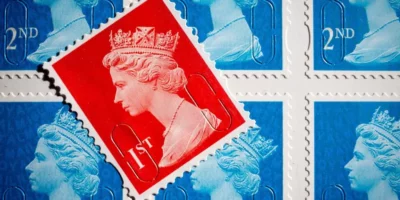20 women inventors everyone should know about
Most famous inventors are men. But there are many women inventors who have significantly contributed to humankind. Some of their inventions are lifesaving, and others have made our lives much easier. So to shine a light on their work, here are some of the women inventors who have impacted our lives to this day.
Josephine Cochrane
Josephine Cochrane was an American socialite. She was also a woman inventor who designed the first commercially successful automatic dishwasher. She wanted a machine that would wash dishes faster and more gently than her servants did, since they kept breaking her china. After her husband’s death left her with a massive debt, she patented the machine in 1886 and opened a production factory, according to BBC News.
Tabitha Babbitt
This weaver from a Shaker community in Massachusetts invented a tool in 1810 that forever changed the way humans cut wood, according to Molly Edmonds’ article in How Stuff Works. After observing two men cutting wood with a two-handled pit saw, she thought up a new type of saw. Her saw didn’t need two men nor did it waste so much energy. Babbitt attached a circular blade to her spinning wheel and invented the prototype for the first circular saw.
Dr. Shirley Ann Jackson
This woman inventor is an American theoretical physicist. Her research from the 1970s is behind many modern-day telecommunications technologies. According to BBC News, Dr. Jackson’s breakthrough research is responsible for caller ID and call waiting. And it paved the way for the portable fax, touchtone telephone, fibre optic cables, and solar cells. Dr. Jackson is also the first black woman to earn a PhD from the Massachusetts Institute of Technology (MIT) and to lead a top-ranking research university.
Stephanie Kwolek
While working as a chemist at DuPont’s Buffalo, New York, facility in the 1960s, Stephanie Kwolek was researching polymers, says Edmonds. In particular, she focused on turning polymers into strong synthetic fibres. As a result of her research, she created Kevlar, a fibre that was as strong as, if not stronger than, steel. Today, many products use Kevlar, including bulletproof vests and helmets, work gloves, suspension bridge cables, tires, brake pads, camping gear, and sporting gear.
Mary Anderson
A snowy winter day in New York City inspired Mary Anderson, a visitor from Alabama, to invent a vital tool for vehicles—the windshield wiper. Before her invention in 1903, drivers had to exit their cars to manually wipe their windshields, according to Edmonds. But Mary devised the idea of putting a rubber blade on a spindle attached to a handle inside the car. With this invention, drivers could pull the handle to clear their windshields from inside their vehicles.
Melitta Bentz
Before Melitta Bentz’s invention, coffee was a bitter, gritty drink. Made by steeping a cloth bag of coffee grounds in a pot of boiling water, coffee was thick with grounds. But in 1908, Bentz, a German housewife, came up with the idea of filtering the coffee. She punched a few holes in a brass pot and placed a thick piece of absorbent paper in the pot. This invention captured the coffee grounds while pouring filtered coffee into a cup.
Caresse Crosby
Thanks to Caresse Crosby, women can breathe a bit better in their undergarments. Crosby, a New York City socialite, designed the first patented modern bra out of frustration with the tight and restrictive corsets women wore back in 1910. Her “backless brassiere” was light and flexible, made of handkerchiefs, ribbons, and pins.
Katharine Blodgett
Katharine Blodgett was the first woman to receive a PhD in physics at England’s Cambridge University. She was also the first woman General Electric hired. And during World War II, her research contributed to military needs like gas masks and smoke screens. She also invented non-reflective or “invisible” glass. This glass was first used for submarine periscopes and lenses in cameras and movie projectors. Today, invisible glass is essential for eyeglasses, computer screens, and windshields.
Bette Nesmith Graham
Like all secretaries in the 1950s, Bette Graham had to retype an entire page on her typewriter if she made a mistake. But thanks to her observation of window painters painting over their mistakes, she came up with an easier solution to fix typos, according to Edmonds. With her blender, water-based tempera paint, and dye to match her company’s stationery, Liquid Paper was born.
Maria Beasley
Maria Beasley’s invention has saved countless lives since its creation. Beasley, an inventor from Philadelphia, is best known for her invention of the Life Raft. According to an article by Susan Fourtané for InterestingEngineering.com, Beasley wanted to create a safer life raft that was fire-proof, compact, and easy to launch. She received a patent for her Life Raft in 1880.
Anna Connelly
Buildings in the United States are a lot safer today thanks to Anna Connelly’s invention. In 1897, Connelly patented the first outdoor fire escape with an external staircase, according to a Huffington Post article by Jessica Samakow. Her fire escape model became part of mandatory building safety codes across the U.S.
Margaret Knight
Due to her inventions in the late 19th century, Margaret Knight was known as “the lady Edison”. While working at a textile mill in New Hampshire, Knight invented a safety device for textile looms. But of her many inventions, she is probably best known for her machine that cut, folded, and glued flat-bottomed paper bags.
Grace Hopper
In 1943, Admiral Grace Hopper joined the military and was stationed at Harvard University, where she worked on IBM’s Harvard Mark I computer. Hopper went on to invent the compiler, which translates English commands into computer code, according to Edmonds. With the compiler, programmers could write code easily and with fewer errors. Hopper also invented a second compiler which programmed the first commercially available computers.
Jeanne Villepreux-Power
In 1832, Jeanne Villepreux-Power, a French naturalist and marine biologist, invented the first glass aquarium, according to Fourtané. She designed the aquarium to help her study marine species. During a shipwreck in 1843, Villepreux-Power lost a large part of her work to the ocean floor. She ceased doing her research and her work was forgotten. But in 1997, her research was rediscovered, giving her life’s work the appreciation it deserved.
Yvonne C. Brill
Yvonne C. Brill was a Canadian-American aerospace engineer rocket scientist, according to Fourtané. And in the 1940s, she was the only woman rocket-science researcher in the U.S. In 1967, Brill invented the hydrazine resistojet propulsion system which keeps communication satellites from falling out of orbit. Her system is still being used today in satellites handling worldwide phone service and long-range television broadcast.
Patricia Bath
Patricia Bath is an American ophthalmologist who has given the gift of sight to many with her invention. Bath invented the Laserphaco probe in 1985, which increased the accuracy of cataract surgery and restored sight in people who had been blind for more than 30 years, according to Fourtané.
Mária Telkes
Originally from Hungary, Mária Telkes moved to the United States after completing her PhD in physical chemistry. From 1939 to 1953, Telkes worked in solar energy research at MIT. In 1947, she created the first thermoelectric power generator and designed the first solar heating system, according to Fourtané. And in 1953, she built the first thermoelectric refrigerator.
Virginia Apgar
Dr. Virginia Apgar was an American obstetrical anesthesiologist who invented the Apgar Score between 1950 and 1952. Her invention was a quick and simple method for assessing the health of newborns. The Apgar Score helped reduce infant mortality rates, and it paved the way for modern neonatology, says Fourtané.
Hedy Lamarr
This Austrian-born American film actress was also an inventor during World War II. According to Fourtané’s article, Hedy Lamarr came up with the idea to create a frequency-hopping signal that could not be tracked or jammed. This technology was used for radio-controlled torpedoes that were commonly jammed or set off-course. But it also paved the way for the development of GPS, Wi-Fi, and Bluetooth technologies.
Ruth Handler
While Ruth Handler’s invention didn’t save lives, it sure has impacted the lives of many children, especially young girls. In 1959, Handler invented the Barbie doll. And she also invented the Ken doll later on. Barbie quickly gained popularity due to television commercials. And by the time Handler died in 2002, more than one billion Barbie dolls had been sold in 150 countries, according to Fourtané.









Comments